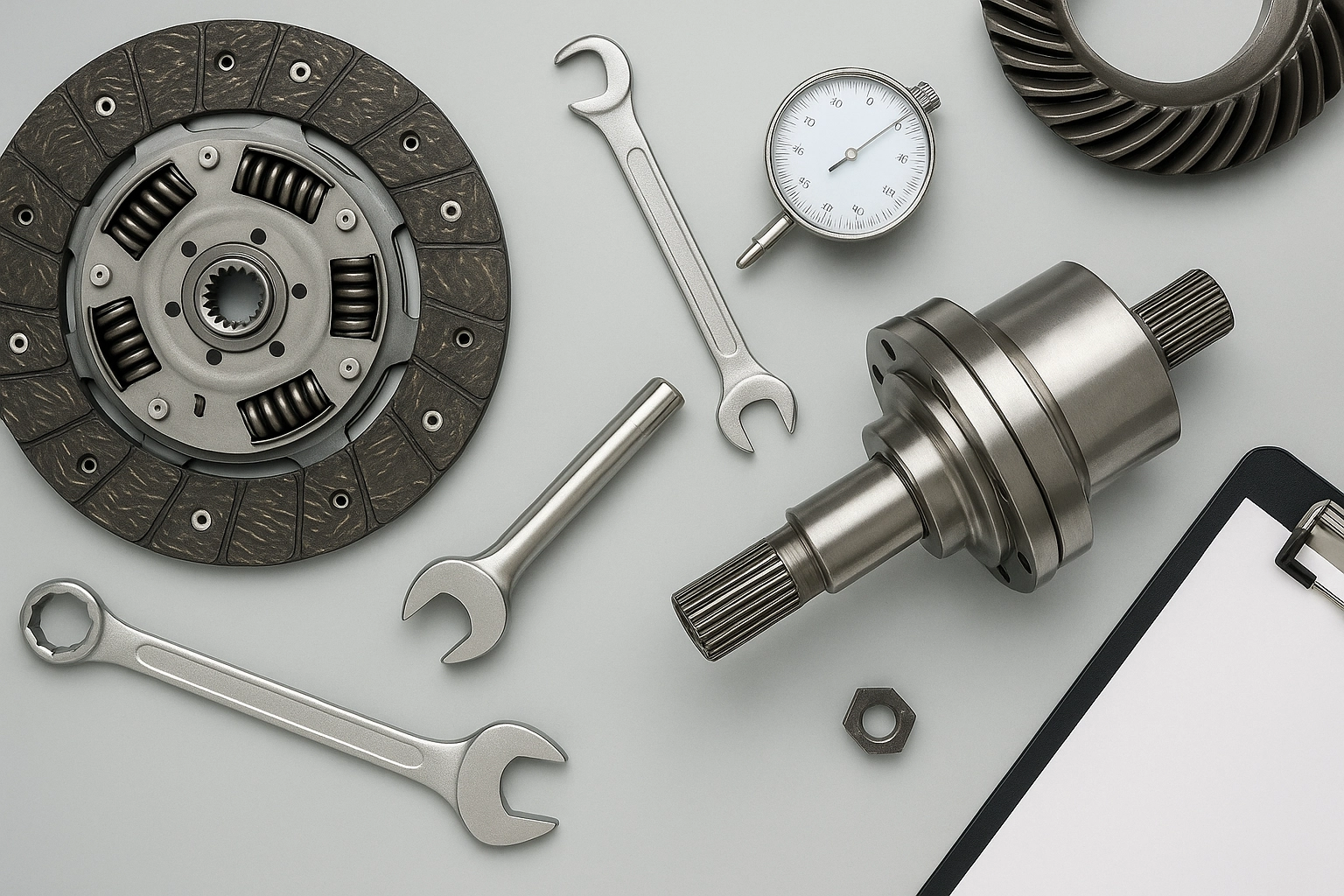ISO 1328 Gear Transmission Accuracy Testing
The ISO 1328 standard provides a comprehensive framework to evaluate gear transmission accuracy, ensuring that the mechanical components of vehicles meet stringent performance and reliability criteria. This service plays a crucial role in automotive quality assurance by providing precise measurements that help manufacturers identify potential issues early in the production process.
Gear transmissions are vital for converting power from an engine into effective torque at the wheels. The accuracy of these gears directly impacts vehicle performance, fuel efficiency, and overall drivability. ISO 1328 testing ensures that each gear set is manufactured to exact specifications, reducing wear and tear on other components and extending the lifespan of the entire transmission system.
During this testing process, we employ specialized equipment designed to simulate real-world conditions under which gears operate. The test setup includes a dynamometer capable of applying controlled loads and measuring torque, speed, and angular position with high precision. This allows us to assess various parameters such as backlash, load distribution, and mesh quality.
Backlash refers to the play or clearance between mating teeth in a gear pair. Excessive backlash can lead to noise and vibration during operation, affecting both ride comfort and fuel efficiency. By measuring backlash accurately, we ensure that each gear set operates smoothly without unnecessary friction losses.
Loading conditions are another critical factor in transmission performance. Our testing equipment can simulate different load scenarios typical of various driving situations—from idling to high-speed cruising or acceleration. This helps identify any weak points or areas where improvements might be necessary for better overall efficiency and longevity.
The mesh quality assessment evaluates how smoothly the gears interact with one another during rotation. Poor mesh alignment can cause premature wear, increased noise levels, and even damage to other parts of the transmission system over time. Using advanced optical inspection techniques combined with computational methods, we can analyze this aspect meticulously.
Once all tests are completed, detailed reports are generated summarizing findings regarding each gear set's compliance with ISO 1328 standards. These documents serve as valuable tools for quality assurance teams to make informed decisions about further refinements or adjustments needed before final assembly into vehicles.
- Backlash Measurement: Ensuring smooth operation and minimizing noise/vibration.
- Loading Conditions Simulation: Evaluating performance under various real-world driving conditions.
- Mesh Quality Assessment: Identifying potential issues that could affect durability and efficiency.
Why It Matters
The importance of ISO 1328 gear transmission accuracy testing cannot be overstated. Automotive manufacturers rely on this service to maintain high standards of product quality, which ultimately contributes to customer satisfaction and brand reputation. By adhering strictly to these internationally recognized guidelines, we help ensure that every vehicle produced meets rigorous performance expectations.
From a broader perspective, accurate gear transmissions contribute significantly to improving fuel efficiency across the entire fleet. Efficient energy transfer translates directly into lower emissions per mile traveled, supporting global efforts towards sustainable transportation solutions. Moreover, reliable gears enhance driving safety by reducing the risk of unexpected mechanical failures on roads.
In addition to environmental benefits, precise transmission accuracy also improves operational reliability and reduces maintenance costs over the life cycle of each vehicle. For procurement departments within automotive firms, knowing that their suppliers comply with such stringent testing protocols offers peace of mind regarding long-term partnership stability.
Industry Applications
This service finds extensive application across multiple segments within the automotive industry. It is particularly important for original equipment manufacturers (OEMs) who require stringent quality controls throughout their supply chain to guarantee consistent product performance.
R&D engineers often turn to ISO 1328 testing when developing new gear designs or exploring alternative materials that could offer better wear resistance or lighter weight compared to traditional options. By incorporating feedback from these tests into design iterations, they can optimize future generations of transmissions for improved efficiency and durability.
For procurement officers responsible for sourcing components from third-party suppliers, this service serves as a critical quality assurance measure. They use test results to verify whether supplied gears meet required specifications before committing large orders or integrating them into new models.
Environmental and Sustainability Contributions
- Fuel Efficiency Enhancement: Precisely tuned transmissions contribute to reduced fuel consumption by optimizing power transfer between engine and wheels.
- Emission Reduction: Lower fuel usage translates into fewer greenhouse gas emissions from vehicles, aligning with global climate goals.
- Resource Optimization: Efficient gears minimize wear and tear during operation, extending component life cycles and reducing waste generation.





